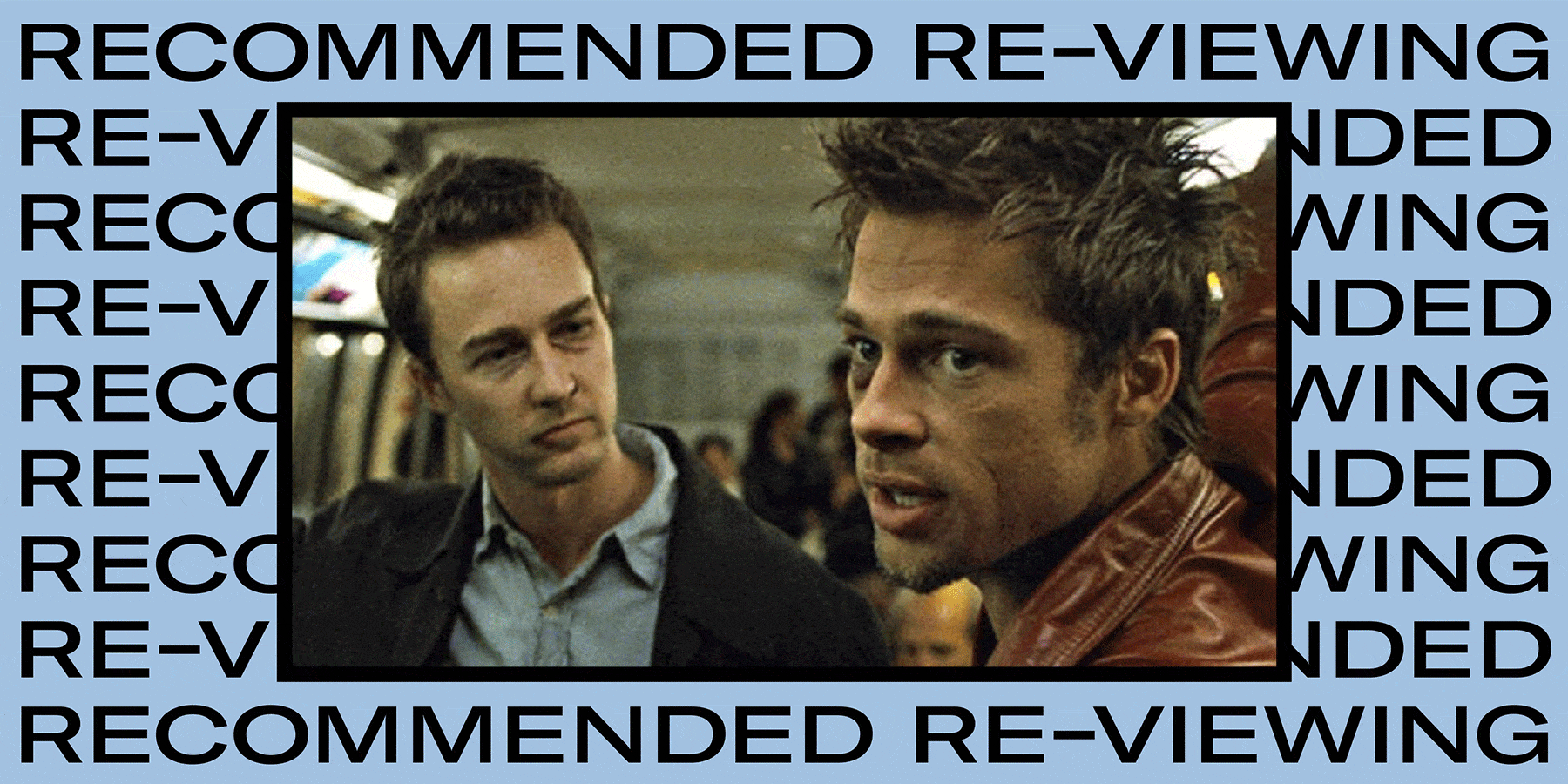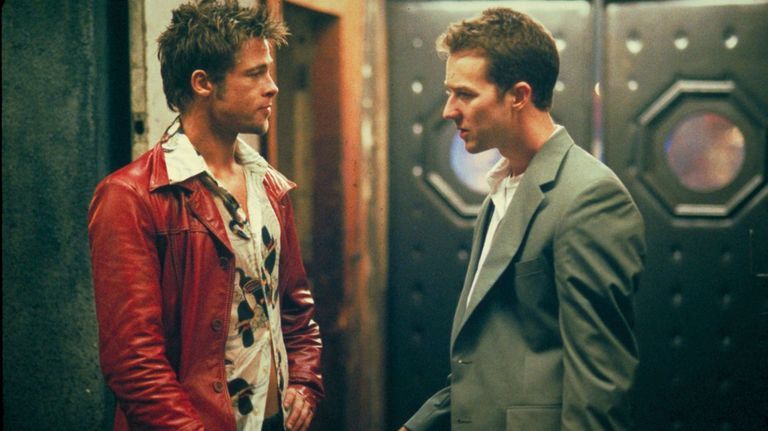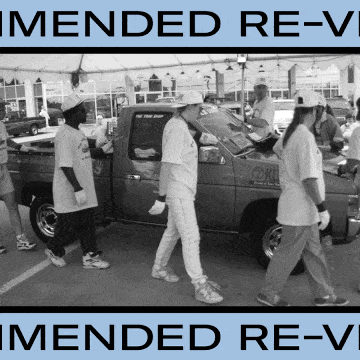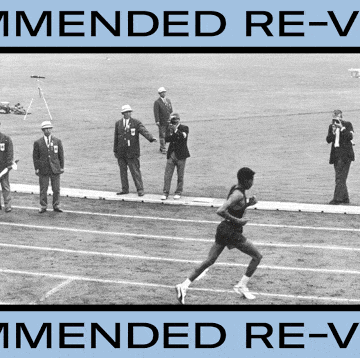Recommended Re-Viewing is a series in which we make the case for re-watching an old film or TV series which you can stream without leaving your house. It might be a plot that's so bad it's good, a scene which deserves more interrogation or a director's underrated gem.
Here, Esquire's fashion assistant Dan Choppen revisits David Fincher's 1999 film 'Fight Club', digging up all the hidden clues he missed first time around.
A couple of days ago, over toast and orange juice, I told my girlfriend: “I want you to hit me as hard as you can.”
She gave me a very concerned look, but upon learning she had never seen David Fincher’s adaptation of the Chuck Palahniuk novel Fight Club her expression made more sense, and so I booked in an isolation date for us to watch it. Now, if you haven’t seen the film, I recommend you stop reading this as there will be spoilers ahead.
Before sitting down to embark on this sweaty, punchy Fincher classic, I hadn't anticipated how a second viewing with a newcomer would affect my own understanding. But knowing that Tyler Durden (Brad Pitt) is a figment of The Narrator's (Edward Norton) imagination, and that he in fact is Tyler Durden, changed the film in unexpected ways.
On first watching, the ideas around identity, masculinity and consumerism appear to be the main story, along with the intriguing love triangle between Tyler, The Narrator and Marla (Helena Bonham Carter). But knowing the ending you see it’s not a love triangle but a projection of who The Narrator wishes he was (remember how Tyler has a part-time job as a projectionist?).
I started to pay more attention to the Easter eggs Fincher is so good at hiding. Throughout the film, except for one scene where the pair are driving in the car with The Mechanic (Holt McCallany) and Ricky (Eion Bailey), who are sitting like dogs in the back, The Narrator and Tyler rarely interact with one another in front of other people. Even in this driving scene, as the car crashes Tyler crawls out from the passenger seat having been in the driving seat beforehand, highlighting that he is only there in The Narrator's imagination.
The Narrator explicitly hints at this idea with Tyler and Marla’s relationship, saying, “they are never in the same room”. In fact, when their relationship starts Tyler begins to explain what happened with Marla the night prior, only for The Narrator to realise, “I already knew the story before he told it to me.”
Later The Narrator attempts to ring Tyler, not getting through he hangs up, immediately receiving a call back from a phone that has written on the side, ‘doesn’t accept incoming calls’. Tyler lives on Paper Street, a term used for a street or road that isn’t real or hasn’t officially been noted or created yet.
Fight Club is full of hints that Tyler isn't real, but without already knowing this they are hidden amongst the strange characters and collapsing buildings that you’re focusing on the first time around. Instead Tyler being a liminal figure just feels like another distraction in this confusing world.
The film's mantra that “You do not talk about Fight Club”, a rule about the need to keep the clubs a secret, but also a reminder of the insider knowledge that Fincher doesn't want you to let on. Fight Club hinges on the big reveal about Tyler, but watching it knowing the final twist proves how cleverly layered it really is. Perhaps we should all be talking about Fight Club after all.
Like this article? Sign up to our newsletter to get more delivered straight to your inbox
Need some positivity right now? Subscribe to Esquire now for a hit of style, fitness, culture and advice from the experts















